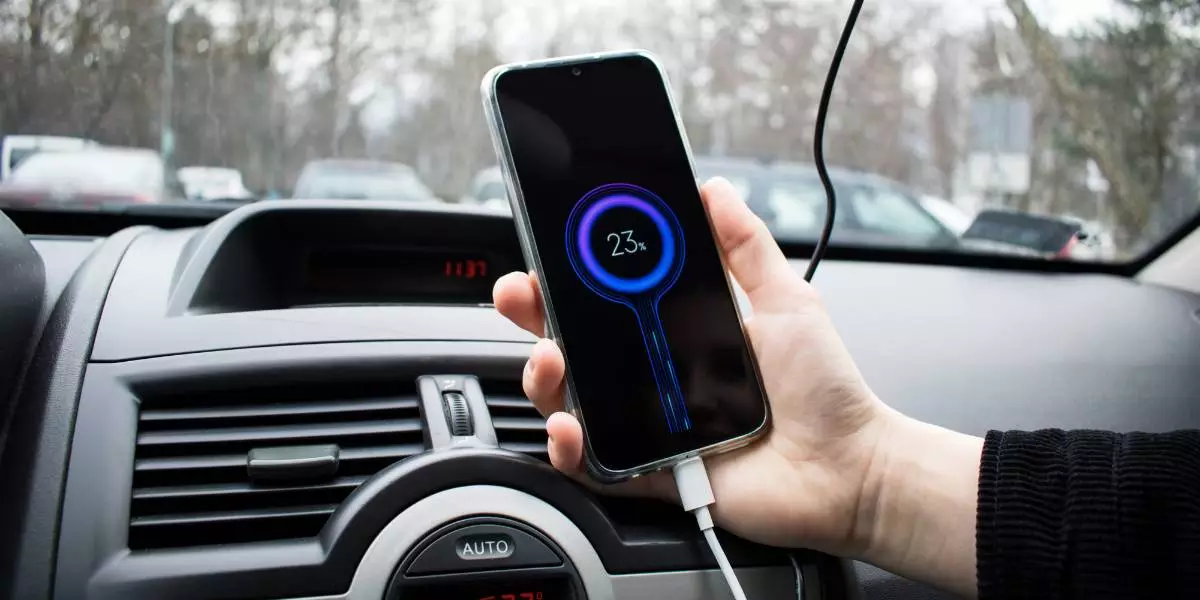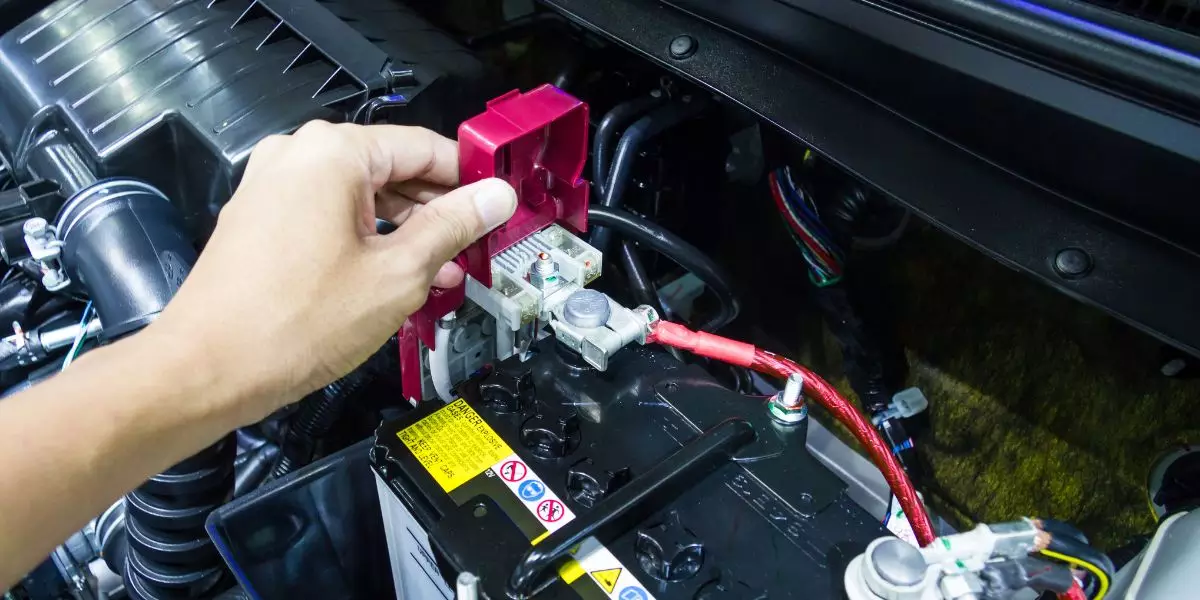Anyone with a cordless drill knows that charging their batteries can take quite some time. So, it gets pretty frustrating when you find yourself driving somewhere with a dead battery. That’s why it’s handy to know that there are car chargers that you can use with those drill batteries!
To charge your drill battery in your car, you’ll need to invest in a car charger from the same brand. That charger plugs directly into your car’s electrical socket (i.e. the cigarette lighter socket). Once it’s plugged in, you can then connect your battery to the charger. That will allow you to charge your drill battery on the go and recharge it whenever necessary.
This complete guide will walk you through the steps for charging your drill battery with a car charger. Plus, we’ll even take a quick look at the pros and cons of using this method to keep your batteries juiced up.
Let’s get to it!
Can You Charge A Drill Battery With A Car Charger?
Yes, you can charge a drill battery with a car charger that plugs into the cigarette lighter. That’s very good news for many tradespeople and DIY-ers alike, particularly those who can’t use a standard charger for whatever reason.
A car charger might not seem like a big deal at first thought. So, some people might not understand why a car charger is a worthwhile investment.
However, the reality is that being able to charge your drill batteries while on the go can be a lifesaver, especially in situations like:
- When you’re on the way to the job site and your batteries are dead.
- When your job site doesn’t have any electricity or plug points you can rely on for charging.
- When your standard charger is broken or missing.
- When you want to charge your batteries on the way home so you don’t forget to do so later.
Of course, you can probably think of a few more situations where using a car charger can make your life so much easier. But those four examples above are enough to prove a point: yes, you can charge a drill battery by plugging a car charger into the cigarette lighter.
How Do You Charge A Drill Battery With A Car Charger?
Let’s suppose you want to be able to charge your drill battery with a car charger. The process is straightforward, and it looks like this:
Get The Car Charger
First and foremost, you need to invest in a car charger of the same brand as your drill batteries.
These days, all major brands produce their own branded car battery chargers like Makita, Bosch, DeWalt, and many more. By purchasing an original car charger from the same brand, you can ensure that the charger is compatible with the drill batteries you own.
For the most part, the car charger is the same as the standard charger you plug into a wall socket. The only significant difference is the plug that’s attached to it.
Car chargers have plugs that go into your vehicle’s power socket (i.e. the cigarette lighter socket). Unfortunately, that means you can only plug them into your car and not into a regular socket.
Once you get your hands on a car charger from your local hardware store or online, you’re good to go.
Plug The Charger In
Once you’ve got the charger, plug it directly into your car’s electrical socket.
The keyword here is ‘directly’. For example, some people use adapters that split their car’s only electrical socket into two or three additional ones to power multiple devices simultaneously.
Sure, that might seem convenient, but it’s going to prevent you from charging your drill battery effectively. That’s because your charger would be struggling with the other devices to get the power supply it needs.
So, when charging drill batteries in your car, make sure the charger is plugged in directly (i.e. not through an adapter) so that it gets all the power it needs.
Connect The Battery
With the charger plugged in, you have to connect the battery. At this point, you’ll probably realize that the process is precisely the same as when you use your standard charger that plugs into the wall.
The only difference is in the previous steps, i.e. using the correct charger and making sure it’s not sharing its power supply.
Recommended: Start The Car
The power socket still functions in most cars even when the engine is turned off. That means the socket will draw power directly from the car’s battery that’s under the hood.
If your car is like that, that means you can plug your drill battery and its charger into the socket and leave it alone to charge. After all, manufacturers have designed those chargers to shut off automatically once the battery is full, so you don’t have to worry about overcharging.
Still, it’s never a good idea to drain power from your car battery while the engine is off. When you do that, you run the risk of the battery going dead when you need it to start your car engine again.
So, if you’re going to charge your drill battery using a car charger, you should at least start the engine. However, you don’t necessarily have to drive the car because the running engine is enough to power the alternator, which keeps your car battery charged.
So, no matter how long your drill battery takes to charge, at least you won’t have to worry about killing your car’s battery in the process.
Pros And Cons Of Charging A Drill Battery With A Car Charger
Some people use car chargers out of necessity, like workers who travel to multiple job sites and don’t have time to charge batteries normally. Others do it out of convenience.
Whichever category you fall into, it’s essential to consider the pros and cons of using a car charger.
Benefits Of Using A Car Charger
- On-the-go charging: The first and most apparent benefit of using a car charger for your drill battery is that you can charge on the go. So, even if your batteries are dead flat, you can charge them by the time you reach your destination.
- Freedom from wall sockets: Some trades people work completely mobile, which means they rarely have the time to plug-in charge their batteries. With a car charger, they can keep all their batteries juiced up without carrying a backup battery.
Drawbacks Of Using A Car Charger
- Have to buy a car charger: You likely already own a standard charger for your drill battery that works fine. However, car chargers are an additional investment you’ll have to make if you want to charge on the go.
- Drains your car battery: When you plug a car charger into your car’s power socket, you’re draining energy from the car battery. Ideally, you should keep your engine running to avoid the risk of killing your battery. Plus, your charger places an extra burden on your car’s electrical system, even if only a small one.
- Charges one at a time: Some power users are likely to have more than one battery they need to use for their day-to-day tasks. When you rely on a car charger, you can only charge one battery at a time. That can be a challenge for anyone needing to charge several drill batteries at once.
Bottom Line: Should You Charge Your Drill Battery With A Car Charger?
Yes, the benefits outweigh the drawbacks, so you should definitely charge your drill battery with a car charger whenever necessary. The car charger is a worthwhile investment for added convenience, and as a lifeline in case your battery’s dead.




